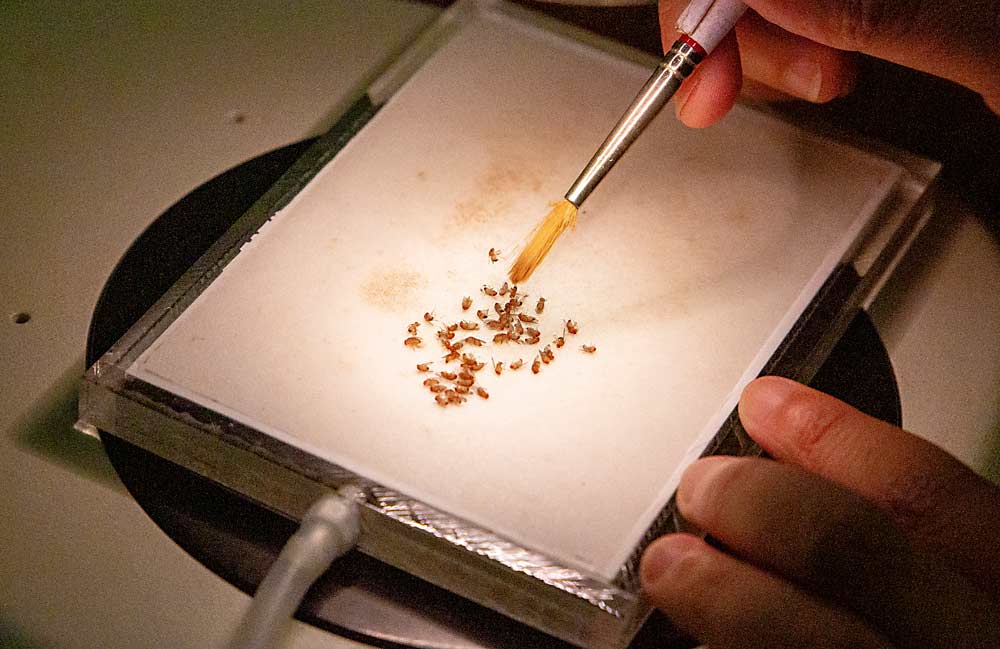
The spotted wing drosophila was already dreaded for its serrated ovipositor that allows females to lay eggs on intact, ripening fruit.
Now, the invasive pest is developing resistance to insecticides in some regions, something the industry and researchers anticipated.
“It’s getting worrisome,” said Joanna Chiu, an entomologist at the University of California, Davis.
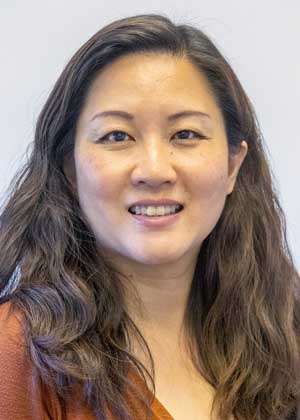
Chiu and colleagues at UC Davis and other universities around the nation are searching for ways to detect that resistance, quantify it, map it, and connect it to genetic markers
So far, SWD populations in California strawberries and caneberries have shown clear, documented evidence of resistance to spinosad and malathion, said Frank Zalom, another UC Davis entomologist collaborating with Chiu. In sweet cherries, reports are more limited, because, until recently, researchers haven’t been looking as hard in cherries. Also, berries in California have a longer growing season, which means more sprays.
However, SWD populations in cherry orchards have likely developed resistance as well, Chiu and Zalom said.
Spotted wing drosophila also affects blueberries and different crops in other parts of the country. So, funded by a series of state and federal grants, researchers at several universities and agencies throughout the nation have been studying the pest for more than 10 years. Most recently, Michigan State University, the University of Georgia, Washington State University and Oregon State University have teamed up with Chiu and Zalom as part of a $5 million project funded by the U.S. Department of Agriculture in 2020 to help fruit producers move from crisis response to integrated management of SWD.
“Pressure cooker”
California is ground zero for spotted wing drosophila (Drosophila suzukii). The invasive pest from Asia hit the state first in 2008 and has dominated research funding for roughly 10 years. Resistance to insecticides turns up the volume even higher.
“It’s a pressure cooker,” said Scott Brown, production manager for Morada Produce of Stockton and chair of the California Cherry Board’s research committee. “We’re getting bad news from every angle.”
Export MRLs (maximum residue levels), domestic regulations and pressure from retailers to reduce the use of insecticides squeeze the growers’ toolbox even more. Brown calls SWD a “zero-tolerance” pest. Its larvae cause decay almost immediately, while 16 countries list it as a “harmful organism.”
Control programs today rely almost entirely on insecticides, though researchers across the country are running integrated management trials with behavioral controls, biocontrols, fly-eating nematodes and other alternatives, while Chiu and other California scientists are exploring transgenic solutions.
A tale of two researchers
At UC Davis, resistance research follows two distinct but connected paths.
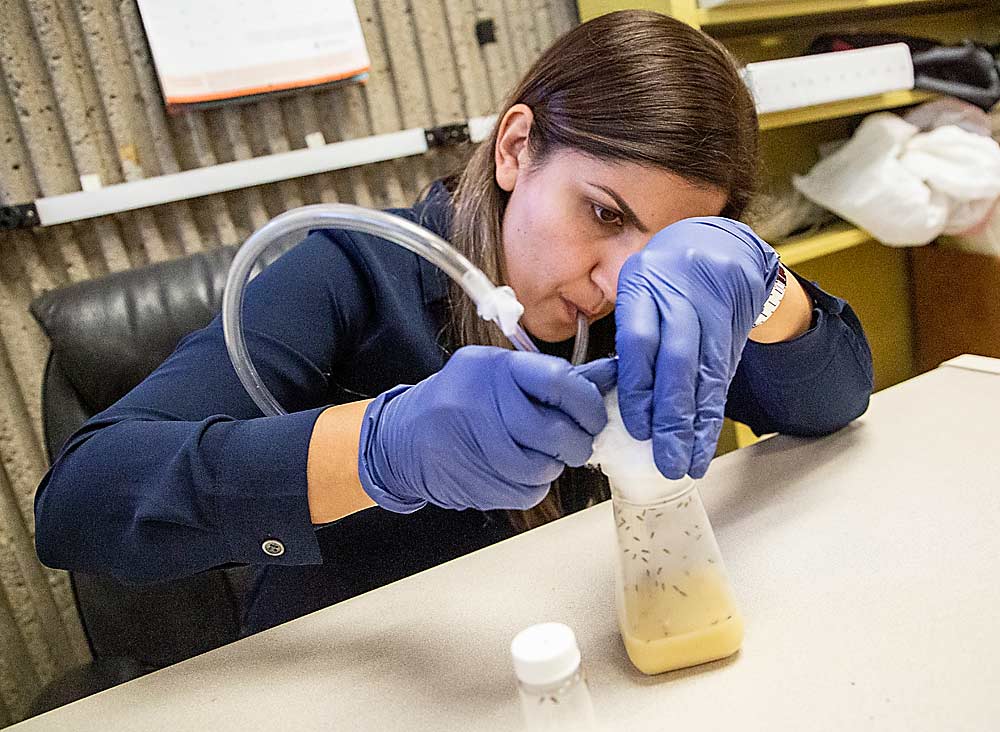
Zalom’s crew collects populations from different California crops, especially where growers report insecticides not working as well as they used to. In the lab, they run discriminating dose trials — systematically exposing suspect populations to different insecticides (malathion, spinosad and pyrethroids) in varying doses to identify and measure resistance.
He and colleagues from UGA and MSU are developing a rapid bioassay — a vial preloaded with a single dose of insecticide that should reveal within eight hours if the flies they place inside have resistance, simply by whether they die or not. That will tell growers if they need to consider alternative control tactics.
His team also studies the stability of resistance. Once they have identified a resistant batch of SWD, they split them up and quit exposing half of them to the chemical in question. They then resume treatments every other generation; if the flies start dying again, resistance has waned.
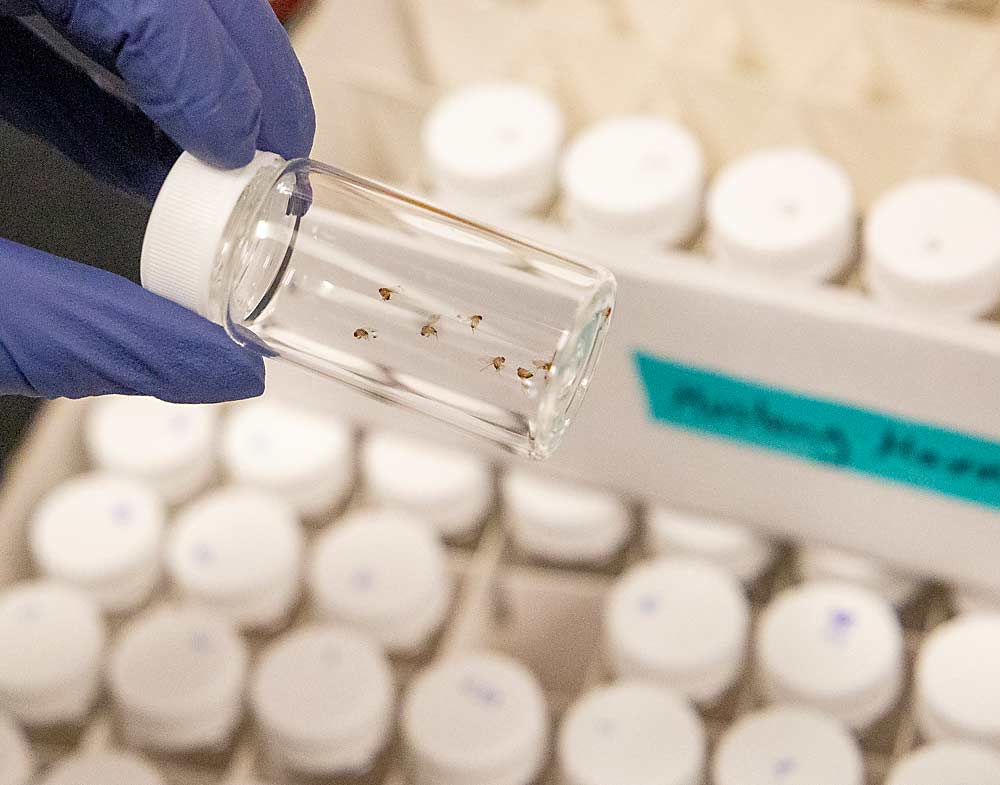
That means they could tell growers to start using a chemical again, after some time off.
“It’s really useful information,” Zalom said.
The pest- and disease-control world is full of examples of susceptibility to chemicals returning over time.
Chiu’s work begins after Zalom’s team identifies a resistant population. First, she propagates those SWD by breeding males and females — she can tell the difference under a scope — to create “isofemale” lines. Keeping those lines going ensures the labs have flies of a documented resistance level to study.
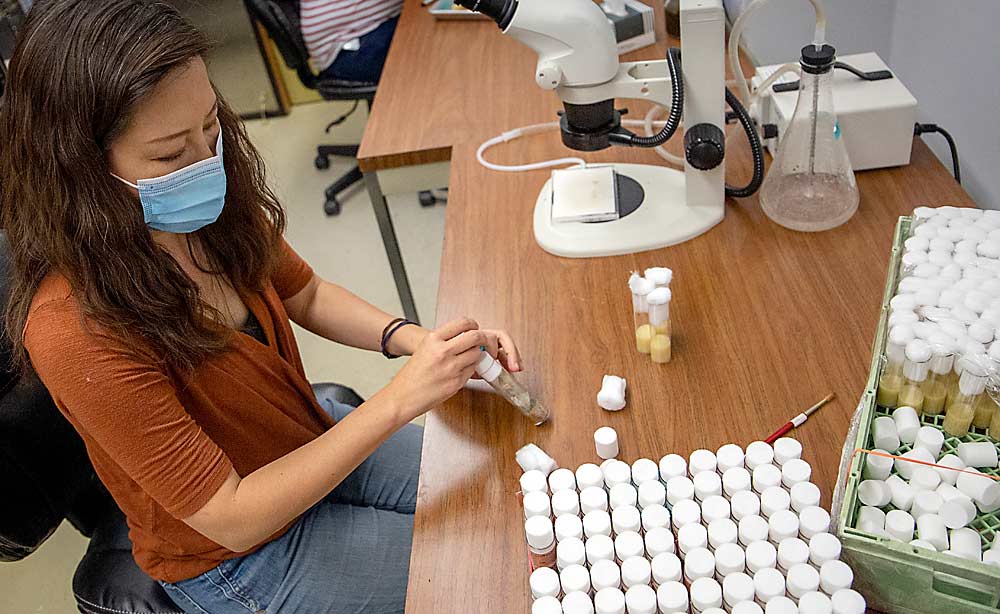
Then, she sequences their genomes, looking for mutations. If she can identify genetic markers for resistance, she can shortcut the entire process. A genetic screen takes an hour or two, relatively short compared to a bioassay that takes six to eight hours.
The genetic work also will tell her the insect’s mechanism of resistance, Chiu said. For example, metabolic resistance means the drosophila has developed the ability to break down that chemical and detoxify itself. Target site resistance means the fly has developed a barrier that prevents the insecticide from binding to the appropriate protein. Both of those mechanisms can develop over time, and an insect can acquire either or both.
Those mutations come at a price to the pest, called a “fitness cost.” If a grower stops using that particular insecticide, the resistant SWD and their progeny should eventually die off, leaving the entire population susceptible again.
The overall goal is to document where and how resistance is happening — or diminishing — and thus better inform growers in that area before they make control decisions.
“Once we see it creeping up, we can tell growers to switch chemistries,” Chiu said.
—by Ross Courtney

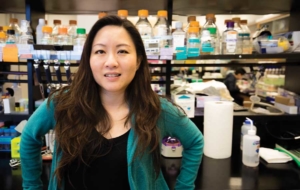
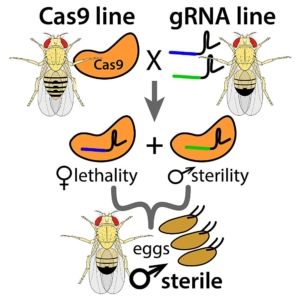
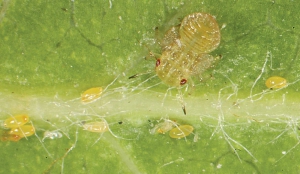





Leave A Comment